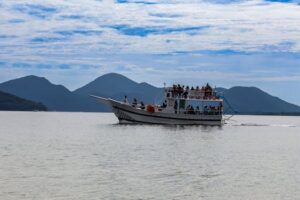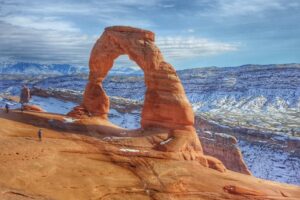Tucked between the mighty Himalayas and the Karakoram range, Ladakh Tourism holds an unmatched charm that attracts travelers from every corner of the world. Known for its dramatic landscapes, ancient monasteries, high mountain passes, and unique culture, Ladakh isn’t just a destination—it’s an emotion for every traveler who visits. From spiritual seekers to adventure lovers, Ladakh caters to every kind of wanderer.
Let’s take a real and detailed look at what makes Ladakh one of the most captivating tourism spots in India.
1. Where Ladakh Tourism Begins: Understanding the Region
Ladakh is situated in the northernmost part of India, within the Union Territory of Ladakh. Often referred to as the “Land of High Passes,” the region sits at altitudes ranging from 9,000 to 25,000 feet. The terrain here is rugged, the climate harsh, but the beauty is undeniably surreal.
Ladakh is divided into two main districts—Leh and Kargil. Leh, the capital, is the hub of all tourism activities and houses the airport, main monasteries, and hotels.
Unlike other hill destinations, Ladakh Tourism is active mainly between May and September, as the rest of the year sees heavy snowfall and closed roads.
2. Ladakh Tourism Highlights: Must-Visit Places
Pangong Tso Lake
No trip to Ladakh is complete without witnessing the changing shades of Pangong Lake. The lake lies at 13,860 ft and stretches from India to China. It gained massive popularity after being featured in movies but remains one of the most serene locations in all of India.
Nubra Valley
Accessible via Khardung La Pass, one of the highest motorable roads in the world, Nubra Valley offers a unique mix of desert, rivers, and snow-capped peaks. The valley is also home to Bactrian camels, which are a rare sight in India.
Magnetic Hill
This gravity-defying spot is a fun stopover where vehicles appear to roll uphill when left in neutral gear. It has become a staple part of Ladakh road trips.
Tso Moriri
Another stunning high-altitude lake, Tso Moriri is more remote and less crowded than Pangong, offering peace and breathtaking scenery.
Leh Palace and Shanti Stupa
Situated in Leh town, these places offer panoramic views and a glimpse into the cultural and spiritual roots of Ladakh.
Zanskar Valley
Ideal for trekking and river rafting, Zanskar is remote and untouched. The Chadar Trek over the frozen Zanskar River is one of the toughest and most unique treks in the world.
3. Adventure Activities that Drive Ladakh Tourism
Trekking
Ladakh is a paradise for trekkers. From Markha Valley Trek to Stok Kangri climb, each trail presents a challenge and unmatched natural beauty. Treks are usually undertaken between June and September.
Motorbiking
Possibly the most iconic activity in Ladakh Tourism is the Leh-Ladakh bike trip. Riding through winding mountain roads with views of snow peaks and deep valleys is a dream for every biking enthusiast.
River Rafting
The Indus and Zanskar rivers offer exciting rapids for white water rafting. This activity is usually carried out in summer when the water flow is strong yet navigable.
Camping
Camping beside Pangong Tso or in the Nubra Valley under a star-studded sky is a surreal experience. The silence and natural beauty make it a popular option among travelers.
Snow Leopard Spotting
In the winter, Ladakh transforms into a snow leopard sanctuary, especially in Hemis National Park. Wildlife enthusiasts and photographers visit during this time for a chance to see the elusive snow leopard.
4. Culture and Spirituality: Heart of Ladakh Tourism
Monasteries of Ladakh
The culture in Ladakh is deeply influenced by Tibetan Buddhism. The monasteries (or Gompas) are not only places of worship but also centers of art, learning, and community. Some notable monasteries include:
-
Hemis Monastery – known for its annual festival
-
Thiksey Monastery – often compared to the Potala Palace in Tibet
-
Diskit Monastery – overlooking Nubra Valley
-
Alchi Monastery – famous for its wall paintings
These monasteries play a huge role in attracting tourists who are keen on understanding the spiritual and cultural essence of the region.
Festivals
Ladakh celebrates various traditional festivals, and these are a great time to witness local music, dances, and rituals. The Hemis Festival and Losar (Tibetan New Year) are among the most prominent.
Local Cuisine
Food in Ladakh is simple, warm, and nourishing. Popular dishes include Thukpa (noodle soup), Momos (dumplings), and Skyu (a traditional stew). Butter tea, made with yak butter, is also worth trying.
5. Sustainable Ladakh Tourism: Things You Must Know
With increasing tourist footfall, Ladakh is facing challenges related to waste management, water shortage, and environmental degradation. As a traveler, being mindful is essential.
-
Always carry a reusable water bottle.
-
Avoid using plastic items.
-
Choose homestays or eco-friendly accommodations.
-
Don’t disturb wildlife or pick flora.
-
Respect local customs and religious places.
Conscious travel ensures that Ladakh Tourism continues to grow without harming the fragile ecosystem.
6. How to Reach Ladakh
By Air
The easiest and quickest way is by air. Leh Kushok Bakula Rimpochee Airport is well-connected to major Indian cities like Delhi, Srinagar, and Chandigarh.
By Road
For adventure lovers, the roads to Ladakh offer an unforgettable journey. There are two routes:
-
Manali to Leh: Open from late May to October.
-
Srinagar to Leh: Open from early May to November.
Both routes offer stunning landscapes but require caution due to altitude and weather changes.
By Bike or Car
A self-drive trip or group bike ride is a big part of Ladakh Tourism’s charm. Riders often plan the journey via Manali or Srinagar, stopping overnight at places like Jispa or Sarchu to acclimatize.
7. Best Time for Ladakh Tourism
-
May to September: This is the peak tourism season with pleasant weather and open roads.
-
October to February: Winter treks like Chadar take place. Expect extreme cold.
-
March and April: These months see fewer crowds and early blooming of Ladakhi spring.
Always check weather and road conditions before planning a trip.
8. Health and Safety Tips
-
Acclimatize for at least 24-48 hours upon arrival in Leh. High altitudes can lead to AMS (Acute Mountain Sickness).
-
Hydration is key. Drink water regularly.
-
Avoid Alcohol in the first few days.
-
Carry Medications for common altitude-related issues.
-
Travel Insurance is advisable, especially if trekking or biking.
9. Permits and Guidelines
Some areas in Ladakh require an Inner Line Permit (ILP) for Indian nationals and Protected Area Permits (PAP) for foreigners. These can be obtained online or through travel agents in Leh.
Regions that often need permits include:
-
Nubra Valley
-
Pangong Lake
-
Tso Moriri
-
Dah-Hanu villages
Always carry multiple photocopies of your permit and identity proof.
10. Ladakh Tourism for Different Travelers
For Solo Travelers
Ladakh is safe, and solo travelers often find it enriching. Hostels, bike rentals, and group treks offer plenty of ways to connect with others.
For Families
If you plan well and allow for acclimatization, Ladakh is perfectly doable for families. Choose homestays or family-friendly hotels and avoid remote trekking trails.
For Couples
A honeymoon in Ladakh is all about stunning landscapes, peaceful moments, and shared adventure. Pangong Lake, Turtuk village, and Leh market make for great couple-friendly spots.
Final Words on Ladakh Tourism
Ladakh Tourism goes far beyond just scenic views or adrenaline-filled road trips. It is a journey into a culture shaped by mountains, meditation, and resilience. It’s where prayer flags flutter against snow peaks and old-world traditions continue alongside the whispers of modern travel.
Whether you come for the landscapes, adventure, or peace of mind, Ladakh leaves a lasting impression that words often fail to capture. Come prepared, travel responsibly, and let Ladakh be more than a trip—it can be a personal story you carry for life.


